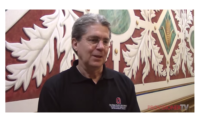Hanacek: Do you believe that this plant is a good look into the crystal ball as to what a Protein Plant of the Future might resemble?
Ettinger: I think this plant would represent a protein plant of the future. First of all, it produces value-added items that feature meat, to which consumers are gravitating more over time, given cooking skills and given time constraints. I think it meets the challenge of the ‘future plant’ because it’s been so thoroughly thought through in terms of food safety, which is something Hormel has always tried to take a leadership position in, and clearly this facility embodies many of those principles. Lastly, the elements of sustainability that our team was able to unleash within this facility, by being able to build a facility like this from the ground up in this current environment where you’re so much more conscious of it. We found we were able to make investments that are not only excellent from a sustainability standpoint but also provide excellent returns to our shareholders. So we wouldn’t hesitate to do it again.
Hanacek: Compare Hormel’s previous greenfield startups to this facility’s construction and startup. Is the technology light-years ahead in terms of design and construction?
Ettinger: There are a number of elements in here that are significantly different even than 15 years ago. What [Chad Sayles, manager of Mechanical and Electrical Engineering, Corporate Engineering Division] said in the press conference rings true to me, that when the Austin plant was built, it was state-of-the-art for that time as well. I think there are a lot of techniques that we’ve become more aware of, even in our existing facilities. The Austin plant, for example, has been very aggressive lately in trying to find ways to reduce water consumption in the facility, and so some of those principles feed in to designing something from scratch.
Hanacek: How do you translate the sustainability message of this plant to the consumers that the Compleats product line is produced in a facility like this, especially given that many consumers might not understand what LEED certification means, exactly?
Ettinger: We haven’t really gotten to that realm yet through the broad media, where we tout the manufacturing background. But as consumers, especially younger ones, become even more Internet-savvy as a whole, there could well be ways that, online, we can promote that this product got rid of the box, enhanced recyclability, reuses the trim from the trays and is now produced in what we hope will be a LEED-certified facility. So I think that can become part of the overall message of the product going forward, we just have to finish developing the strategy for getting that word out.



